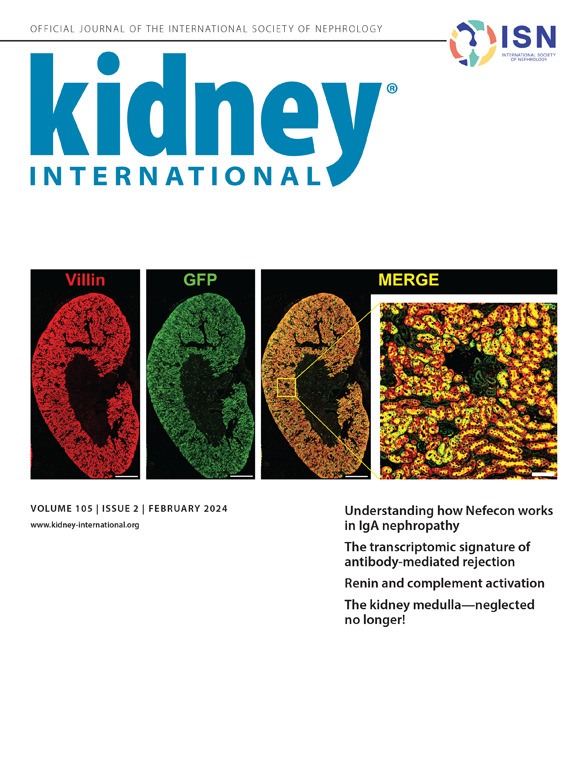肾病学的新时代:超分辨率显微镜在研究、医学诊断和药物发现中的作用。
IF 14.8
1区 医学
Q1 UROLOGY & NEPHROLOGY
引用次数: 0
摘要
几十年来,电子显微镜(EM)一直是可视化肾脏超微结构细节的主要方法,包括足细胞足突和狭缝隔膜。尽管EM是金标准,但它有明显的局限性:它需要费力的样品制备,只适用于非常小的样品,主要是定性的,并且容易由于截面角偏差而产生误解。此外,将成像和蛋白质染色与抗体相结合也带来了挑战,限制了EM与常规研究和诊断工作流程的整合。随着成像技术的进步,光学分辨率低于100纳米的超分辨率显微镜为详细观察肾小球超微结构提供了一种有希望的选择。本综述探讨了各种超分辨率技术,特别是3D-SIM,并演示了如何将它们应用于标准组织学切片。基于3d - sim的测量程序PEMP提供了一种量化足细胞足突(PFP)形态的新方法,甚至可以在蛋白尿出现之前检测到PFP的变化。此外,PEMP可以与mRNA检测、多重染色和深度学习算法相结合,使其成为肾脏研究、临床前研究和个性化诊断的强大工具。这一进步有可能加速药物开发,提高治疗精度,预示着高精度肾病学的新时代。本文章由计算机程序翻译,如有差异,请以英文原文为准。
A new era in nephrology: the role of super-resolution microscopy in research, medical diagnostic, and drug discovery
For decades, electron microscopy has been the primary method to visualize ultrastructural details of the kidney, including podocyte foot processes and the slit diaphragm. Despite its status as the gold standard, electron microscopy has significant limitations: it requires laborious sample preparation, works only with very small samples, is mainly qualitative, and is prone to misinterpretation because of section angle bias. In addition, combining imaging and protein staining with antibodies poses a challenge, limiting electron microscopy’s integration into routine research and diagnostic workflows. As imaging technology advances, super-resolution microscopy, with an optical resolution below 100 nm, presents a promising alternative for detailed insights into glomerular ultrastructure. This review explores various super-resolution techniques, particularly 3-dimensional structured illumination microscopy, and demonstrates how they can be applied to standard histological sections. The 3-dimensional structured illumination microscopy–based measurement procedure—podocyte exact morphology measurement procedure—offers a novel approach to quantifying podocyte foot process morphology and can detect podocyte foot process changes even before proteinuria is present. Furthermore, the podocyte exact morphology measurement procedure can be combined with mRNA detection, multiplex staining, and deep learning algorithms, making it a powerful tool for kidney research, preclinical studies, and personalized diagnostics. This advancement has the potential to accelerate drug development and enhance therapeutic precision, heralding a new era of high-precision nephrology.
求助全文
通过发布文献求助,成功后即可免费获取论文全文。
去求助
来源期刊

Kidney international
医学-泌尿学与肾脏学
CiteScore
23.30
自引率
3.10%
发文量
490
审稿时长
3-6 weeks
期刊介绍:
Kidney International (KI), the official journal of the International Society of Nephrology, is led by Dr. Pierre Ronco (Paris, France) and stands as one of nephrology's most cited and esteemed publications worldwide.
KI provides exceptional benefits for both readers and authors, featuring highly cited original articles, focused reviews, cutting-edge imaging techniques, and lively discussions on controversial topics.
The journal is dedicated to kidney research, serving researchers, clinical investigators, and practicing nephrologists.
 求助内容:
求助内容: 应助结果提醒方式:
应助结果提醒方式:


